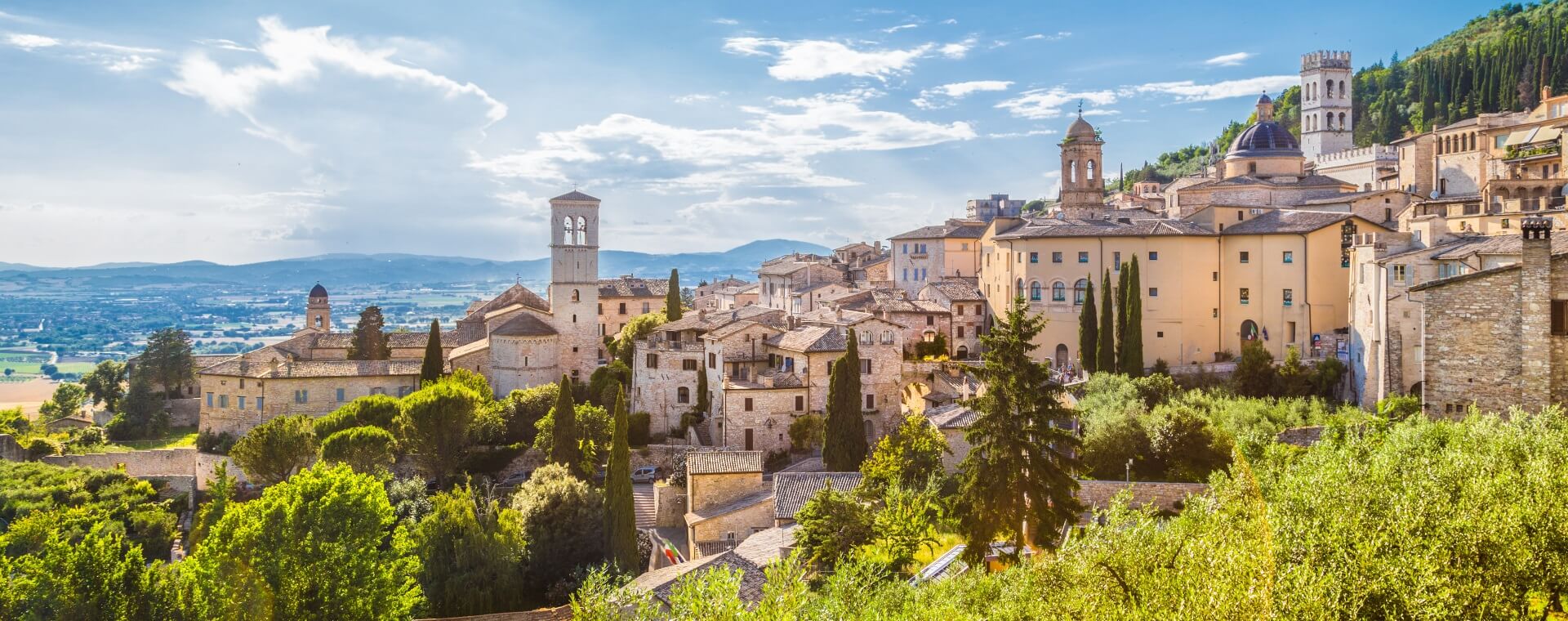Travel GuideUmbria & Marches
Umbria & Marches
The region of Umbria borders Tuscany and Lazio, roughly up to Terni, Orvieto, Lago Trasimeno and Città di Castello. This area is considered to be Italy’s interior. Le Marche borders with Emilia-Romagna and Abruzzo, as well as with Umbria, covering the rest of the land until the Adriatic coast. If you go inland, Italy has green land and hillsides covered with olive groves and wheat fields with mediaeval fortresses at the top. Throughout the region, you will see large castles that are proof of the centuries of battles that took place there. Even in the smaller cities, you will find a castle, a church or a museum that are worth visiting. Inside many of these attractions, there are magnificent Renaissance works of art for you to admire, by artists such as Giotto. The Umbria region is perfect for slow journeys, using the winding roads that reveal fantastic views as you travel along them. The Assisi basilica and the Orvieto cathedral are two of the country’s most important tourist attractions, and areas like Perugia and Spoleto have a wealth of art and architecture. Le Marche covers a narrow coastal strip and, therefore, the region’s beaches with their crystal-clear water, facing Croatia. However, further inland, this area is quite mountainous, with picturesque mediaeval towns, olive groves and vineyards, which are spread across the fertile hills in various shades of green, crossed by rivers, creeks and plains. These hills gradually turn into a mountainous area renowned for its numerous caves and gorges. Visiting the small villages and towns turns into a journey to discover the local cuisine and mediaeval culture. The climate in the areas of Umbria and Marches is hot in summer and generally mild in winter.

